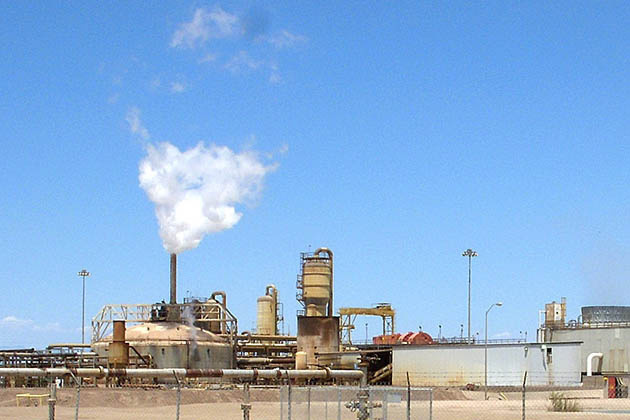Photo: monikomad/Flickr
Last week a series of studies was published in Science, which looked at the connections between energy production and earthquakes. Specifically, they examined the connection between injecting fluid underground and seismic activity. Certainly there has been a number of well-publicized incidents in the past couple of years where hydraulic fracturing operations have been linked to earthquakes; it's pretty much conventional green wisdom at this point.
Given the controversy surrounding fracking, it's not surprising that most reporting on the studies jumped on that connection. Mother Jones seemed to be first out the gate. At least I saw "Confirmed: Fracking Triggers Quakes and Seismic Chaos" before anything else.
It's a good summary of two of the three studies lumped together by the publishers around this topic—the gist of which is that in the case of fracking, it's the disposal wells rather than the drilling itself that has the biggest connection with earthquakes, and which can have truly far reaching consequences. It's important research, and another strike against fracking.
But it's the third study, overlooked by MoJo and most of the other pieces about the research, that also bears highlighting. In it, researchers from the University of California, Santa Cruz look at geothermal energy production near the Salton Sea in southeast California.
The study found, after examining earthquake records from 1981 to 2012 and comparing them with production data from the nearby geothermal power plant, that before 1986 the rate of earthquakes in the region was low. The rate increased after 2001, correlating to when production at the plant increased. Though the largest quake in the area during the study time period was pretty small (magnitude 5.1), the San Andreas fault is nearby, which is certainly capable of causing much larger earthquakes.
Lead researcher Emily Brodsky said, "We found a good correlation between seismicity and net extraction."
As for whether the plant might exacerbate the San Andreas fault, Brodsky added that, "It's hard to draw a direct line from the geothermal field to effects on the San Andreas fault...it seems plausible that they could interact." More research will have to be done to determine just how big of a threat the Salton Sea plant and the other three geothermal plants in the area are.
We've known for some time that geothermal power production can trigger quakes. That's not the big deal here. Rather, as Brodsky points out, "The findings show that we might be able to predict the earthquakes generated by human activities [if we] take a large view of the system and consider both the water coming in and out of the ground."
Brodsky's referring to the fact—for those not up on geothermal power production, specifically flash steam plants—that this type of plant is extracts more water than it ultimately puts back in the ground. It's that rate, how much water is lost in production, that is "well correlated with earthquake incidence." Modifying the geothermal process might be neccessary to keep the Earth from moving under anyone's feet.
It'd be pretty embarrassing to have geothermal energy cause the "big one" that drops California into the ocean, before global warming even has a chance to flood it. If push really comes to shove, sunny California with its miles and miles of coastline might have to come up with another alternative energy source.
